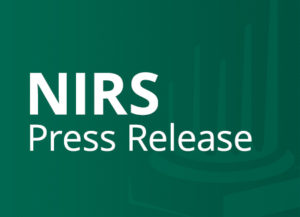June 29, 2011, Washington D.C. — A new NIRS research report examines selected statewide public pension plans to identify common elements of plans that remained well funded despite two severe economic downturns.
Download report here. Download PowerPoint here.
The study identifies six features that enabled those plans examined to remain sustainable and affordable:
- Employer pension contributions that pay the full amount of the annual required contribution, and that maintain stability in the contribution rate over time;
- Employee contributions to help share in the cost of the plan;
- Benefit improvements, such as multiplier increases, that are actuarially valued before adoption and properly funded upon adoption;
- Cost of living adjustments (COLAs) that are granted responsibly, for example through an ad hoc COLA that is amortized quickly, or an automatic COLA that is capped at a modest level;
- “Anti-spiking” measures that ensure actuarial integrity and transparency in pension benefit determination; and
- Economic actuarial assumptions, including both the discount rate and inflation rate, that can reasonably be expected to be achieved over the long term.
These findings are contained in the new study, “Lessons Learned from Well-Funded Public Pensions: An Analysis of Six Plans that Weathered the Financial Storm.” The report was led by Dr. Jun Peng, associate professor at the University of Arizona, and co-authored by Ilana Boivie, an economist and NIRS director of programs.
“Unfortunately, scant attention is focused on public pension plans that were structured in ways that enabled them to weather severe market turmoil,” said Diane Oakley, NIRS executive director. “Separate from this study, data show that the vast majority of public pensions were well-funded going into the financial crisis, took a severe blow like all investors, and are recovering as the financial markets rebound. As such, we hope this new study serves to re-focus pension policy debate on a productive, pragmatic examination of pension plans that remained strong even after a decade of unprecedented financial market ups and downs,” Oakley said.
Ilana Boivie, NIRS director of programs added, “This new analysis can serve as a valuable tool for policymakers working to strengthen public pensions so the plans can continue to keep their retirement commitment to millions of working Americans at the lowest cost to taxpayers.” Boivie added, “It’s important to note, however, that these six common features are NOT a ‘one-size-fits-all’ approach. Every pension plan is unique, and so too is their funding policy, benefit design, and economic assumptions. All six well-funded plans we studied remained sound even though their approaches may have differed.”
The study was conducted via a comprehensive analysis of the funding policy, benefit design and economic assumptions for the following six public pension plans selected for analysis:
- Delaware State Employees Pension Plan
- Idaho Public Employee Retirement Fund
- Illinois Municipal Retirement Fund
- New York State Teachers’ Retirement System
- North Carolina Teachers & State Employees Retirement System
- Teacher Retirement System of Texas
NIRS will host a webinar for media and interested parties on Wednesday, June 29, 2011 at 11:00 AM ET to present the findings and respond to questions. For registration, visit https://www2.gotomeeting.com/register/731472850. Dial In: (909) 259-0012, Access Code: 414-390-832, Audio PIN: Shown after joining the Webinar.
About NIRS
The National Institute on Retirement Security is a not-for-profit, non-partisan organization established to contribute to informed policymaking by fostering a deep understanding of the value of retirement security to employees, employers, and the economy through national research and education programs. Located in Washington, D.C., NIRS has a diverse membership of organizations interested in retirement security including financial services firms, retirement plan sponsors and service providers, and trade associations among others. More information is available www.nirsonline.org.
